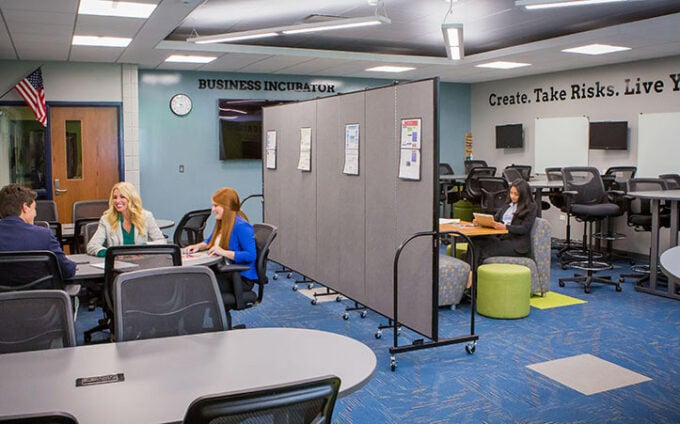Student Engagement Strategies
Market: Education

Ever since the conception of institutionalized schools, teachers have looked for ways to keep their students engaged in the classwork. These days, with the introduction of remote learning because of the COVID-19 Pandemic, keeping kids engaged is more prevalent than ever. So how are teachers doing it? Here are some student engagement strategies to keep your class motivated for both in-person and remote learning.
Movement
Especially for younger kids, moving around is necessary throughout the day. Humans, in general, are not meant to sit in one place. For this reason, incorporate activities that allow your students to move. Here are some activity ideas to get your classes moving:
Elementary Aged Kids: Movement for little kids can be as simple as quick stretching or dance breaks between activities. Kids should be moving around as much as possible, so include it in your curriculum activities as well.
- In-person activity: if your kindergarten class is learning the alphabet, display the letters separately around the room and list various objects that start with each letter. Then have the kids stand by the letter they think it starts with.
- Remote activity: For the same example of learning the alphabet, instead of having the kids stand by the letter that each object begins with, have them search in their house for an object that begins with the letter you choose. You can even make it a race to make it more fun.
Both of these techniques get the kids moving, and it is also a way of gamification, which there will be more on later in the article.
Middle/ High School-Aged Kids: Even though middle and high school students are older, they still need to move. However, the activities may look a little different since the curriculum is understandably more advanced.
- In-person activity: Create separate stations for each skill they are learning. By splitting your class into smaller groups, they can finish a learning point task at each station and then move around the room to complete the rest of them. This is a subtler technique for movement, perfect for the older age groups.

- Remote activity: Instead of finding objects around their house beginning with a specific letter, have your students search for items that have to do with your topic that day. Then have them takes turns telling the class why it’s relevant. For instance, if you are teaching Shakespeare, one of your students may find an old book to show off. In contrast, they could find the family pet that just so happens to be named after one of the plays. Let them be creative regardless of what they find!
Gamification
Similar to movement, students of all ages typically respond well to games as engagement strategies. Think back to when you were in school, and your teacher created a fun game for the day. Not only do you probably remember some of the facts from then, but it is also likely a fun memory as well. Here’s how you can create those same memories for your students as a teacher.
- In-person activity: A game that works well for many of the older students, or at least the ones that can read, is a Jeopardy board for your class’s current topic. On this board can be a list of study questions and the answers on a future test. By giving the kids time to prepare, they can study for their test while playing an interactive game.
- Remote activity: When teaching virtually, have each student say a phrase or term while on mute. Then have the rest of the class try to guess what they said. To make this game more about your topic, the rules can make the sentence about your current curriculum. Though not totally relating to school, this exercise can be a fun break for engagement. This type of activity works for any age as well.
Though these games are only a couple of examples, there are countless ways to create new games to become old favorites for your class.
Collaboration
Another usable tactic for both in-person and remote learning is encouraging collaboration between students. This engagement strategy allows students to learn from one another and shakes up the norm of one person talking. Not to mention, while your students collaborate, you will likely also incorporate the first two tactics as well.
- In-person activity: For older students, assign them a group research project and give them time in class to go over it. During their project time, allow them to use any classroom tools to help them get organized, such as a dry-erase board or other brainstorming tools. For younger kids, a group project would look more like a group crafting or art project instead of research, but the notion of using all of the classroom tools still applies.

- Remote activity: Assign your older kids questions on your subject matter for the week. If you are teaching literature, have your students break off into groups on Zoom to discuss study questions together. By breaking the students into small groups, each of them has more of an opportunity to speak up and not seem like a small fish in a large pond. When kids are actively talking about the subject matter, they can sometimes learn more. For the younger kids, ask one of them to lead a dance break for collaboration instead.
The COVID Pandemic has created a variety of new challenges for teachers as they navigate this new normal. Using these strategies during both remote learnings and now as kids return to school, teachers can help increase student engagement.